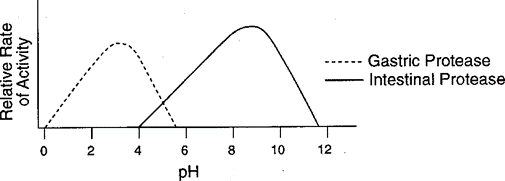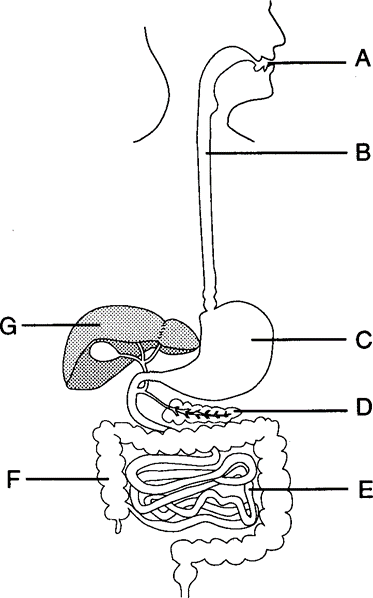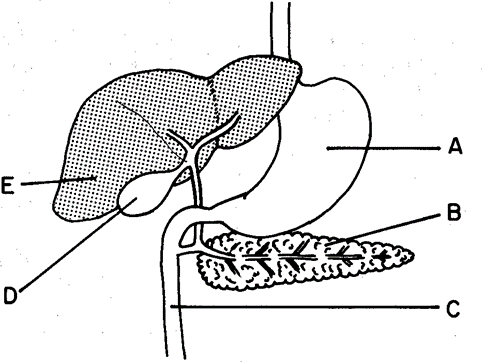Which nutrients can be absorbed without first being digested in the human gastrointestinal tract?
A. carbohydrates and polypeptides
B. proteins and vitamins
C. minerals and polysaccharides
D. vitamins and minerals
For those aiming to excel in their ATI TEAS test and secure admission into their desired nursing program, ExamGates offers an invaluable resource. Our platform features practice questions meticulously crafted by tutors who have previously aced the exam themselves. With ExamGates, you can access content that is 100% relevant to the test, accompanied by vivid images and illustrations. Additionally, our platform provides comprehensive explanations for both correct and incorrect answers, empowering you to fully grasp the material and optimize your study efforts. Take the first step towards your nursing aspirations with ExamGates today.
D) vitamins and minerals
- Correct: Vitamins and minerals are nutrients that can be absorbed without first being digested in the human gastrointestinal tract. Unlike carbohydrates, proteins, and fats, which require enzymatic digestion to break them down into smaller molecules for absorption, vitamins and minerals are already in a form that can be readily absorbed by the body. Once absorbed, vitamins and minerals play essential roles in various physiological processes, such as metabolism, immune function, and bone health.
A) carbohydrates and polypeptides
- Incorrect: Carbohydrates and polypeptides (large protein molecules) require enzymatic digestion to break them down into simpler molecules (such as glucose from carbohydrates and amino acids from polypeptides) before they can be absorbed by the gastrointestinal tract.
B) proteins and vitamins
- Incorrect: Proteins require enzymatic digestion to break them down into amino acids before they can be absorbed by the gastrointestinal tract. While vitamins do not require digestion and can be directly absorbed, proteins do not fall into this category.
C) minerals and polysaccharides
- Incorrect: Minerals, such as calcium, iron, and zinc, can be directly absorbed without prior digestion in the gastrointestinal tract. However, polysaccharides (complex carbohydrates) require enzymatic digestion into simpler sugars before they can be absorbed.
Therefore, the Correct Answer is D.
More Questions on Digestive System Practice Exam 1
Question 1:
In humans, structures that release digestive secretions directly into the small intestine include both the
A. salivary glands and the pancreas
B. gall bladder and the lacteals
C. villi and the salivary glands
D. pancreas and the gall bladder
The Correct Answer is D.D) pancreas and the gallbladder
- Correct: Both the pancreas and the gallbladder release digestive secretions directly into the small intestine. The pancreas secretes pancreatic enzymes (such as amylase, lipase, and proteases) into the small intestine to aid in the digestion of carbohydrates, fats, and proteins. The gallbladder stores bile produced by the liver, which is released into the small intestine to aid in the emulsification and digestion of fats.
A) salivary glands and the pancreas
- Incorrect: While the pancreas releases digestive secretions directly into the small intestine, the salivary glands secrete saliva into the mouth, which contains enzymes (such as amylase) that begin the digestion of carbohydrates. Salivary glands do not release digestive secretions directly into the small intestine.
B) gall bladder and the lacteals
- Incorrect: The gallbladder stores bile produced by the liver, which is released into the small intestine to aid in fat digestion. Lacteals are lymphatic vessels found in the villi of the small intestine and are involved in the absorption of fats, but they do not release digestive secretions directly into the small intestine.
C) villi and the salivary glands
- Incorrect: Villi are finger-like projections in the small intestine that increase the surface area for absorption of nutrients but do not release digestive secretions directly into the small intestine. Salivary glands secrete saliva into the mouth to initiate the digestion of carbohydrates but do not release digestive secretions directly into the small intestine.
Question 2:
A branch of the nerve regulating the secretions of the stomach can be cut surgically. The decrease in hydrochloric acid secretion that would result from this procedure would be most helpful to an individual with
A. diarrhea
B. appendicitis
C. gallstones
D. ulcers
The Correct Answer is D.D) ulcers
- Correct: The decrease in hydrochloric acid secretion resulting from the surgical cutting of a branch of the nerve regulating stomach secretions would be most helpful to an individual with ulcers. Ulcers are sores or lesions that develop in the lining of the stomach, small intestine, or esophagus due to factors such as infection with Helicobacter pylori bacteria, prolonged use of nonsteroidal anti-inflammatory drugs (NSAIDs), or excessive alcohol consumption. Hydrochloric acid plays a significant role in the formation and exacerbation of ulcers by increasing the acidity of the stomach, which can irritate and erode the lining of the gastrointestinal tract. Therefore, reducing hydrochloric acid secretion can help alleviate the symptoms and promote healing of ulcers.
A) diarrhea
- Incorrect: Decreasing hydrochloric acid secretion would not directly address the underlying causes of diarrhea, which may be related to infections, dietary issues, or other factors affecting gastrointestinal motility and water absorption.
B) appendicitis
- Incorrect: Appendicitis is inflammation of the appendix, a small pouch located near the junction of the small and large intestines. Decreasing hydrochloric acid secretion would not directly affect the development or treatment of appendicitis.
C) gallstones
- Incorrect: Gallstones are hardened deposits that form in the gallbladder and can obstruct the flow of bile. Decreasing hydrochloric acid secretion would not directly address the formation or treatment of gallstones, as they are primarily composed of cholesterol or bilirubin, not affected by changes in stomach acid levels.
Question 3:
Base your answer to the following question on Which statement best expresses the information represented in the graph shown below?

A. The action of enzymes varies with pH.
B. A pH of 7 provides the optimum environment for digestive enzymes.
C. Gastric juice is active at a pH extending from 0 to 12.
D. Acids have a pH greater than 7.
The Correct Answer is A.The action of enzymes vary with pH. Enzymes are proteins that catalyze biochemical reactions, and their activity is influenced by various factors including pH.
The pH level affects the ionization state of amino acid residues within the enzyme's active site. This, in turn, can affect the enzyme's ability to bind substrate molecules and catalyze reactions.
Different enzymes have different optimal pH ranges at which they exhibit maximum activity. This optimal pH range is determined by the specific environment in which the enzyme typically functions. For example, pepsin, which is involved in digesting proteins in the stomach, works optimally at an acidic pH around 2, whereas enzymes in the small intestine function optimally at a slightly alkaline pH around 7 to 8.
Extreme deviations from the optimal pH can denature enzymes, causing them to lose their structure and function. Therefore, maintaining the appropriate pH level is crucial for ensuring the proper functioning of enzymes in biochemical reactions.
Question 4:
Which structures secrete chemicals utilized for the completion of digestion within the small intestine?
A. liver and pancreas
B. glomerulus and villi
C. esophagus and alveoli
D. gallbladder and pharynx
The Correct Answer is A.A) liver and pancreas
- Correct: The liver and pancreas both secrete chemicals that are utilized for the completion of digestion within the small intestine. The liver produces bile, which is stored in the gallbladder and released into the small intestine to aid in the emulsification and digestion of fats. The pancreas secretes pancreatic enzymes (such as amylase, lipase, and proteases) into the small intestine to further break down carbohydrates, fats, and proteins into smaller molecules that can be absorbed.
B) glomerulus and villi
- Incorrect: The glomerulus is a part of the kidney involved in the filtration of blood, and villi are finger-like projections in the small intestine that increase surface area for absorption. While villi play a role in absorption within the small intestine, they do not secrete chemicals for digestion. The glomerulus is not involved in digestion.
C) esophagus and alveoli
- Incorrect: The esophagus is involved in swallowing and does not secrete chemicals for digestion. Alveoli are air sacs in the lungs where gas exchange occurs during respiration and are not involved in digestion.
D) gallbladder and pharynx
- Incorrect: The gallbladder stores bile produced by the liver but does not secrete chemicals directly into the small intestine. The pharynx is involved in swallowing and does not secrete chemicals for digestion.
Question 5:
Base your answer to the following question on the diagram below, which represents the human digestive system.

Most reabsorption of water occurs within structure
A. F
B. G
C. C
D. D
The Correct Answer is A.Most reabsorption of water occurs in the large intestine, F.
Question 6:
Base your answer to the following question on the diagram below of some human digestive organs and on your knowledge of biology.

Which organ synthesizes both urea and bile?
A. A
B. E
C. C
D. D
The Correct Answer is B.The organ that synthesizes both urea and bile is the liver (E).
The liver plays a crucial role in metabolism and detoxification in the body. It synthesizes urea as a waste product of protein metabolism through the process of the urea cycle. Urea is then excreted by the kidneys in urine.
Additionally, the liver produces bile, a substance that aids in the digestion and absorption of fats. Bile is synthesized in hepatocytes (liver cells) and then stored and concentrated in the gallbladder before being released into the small intestine to emulsify fats.
Question 7:
Bile is a secretion which aids in the digestion of
A. lipids
B. proteins
C. saccharides
D. starches
The Correct Answer is A.A) lipids
- Correct: Bile is a secretion produced by the liver and stored in the gallbladder. It aids in the digestion of lipids (fats) by emulsifying large fat globules into smaller droplets. This process increases the surface area of fats, allowing digestive enzymes such as lipase to more efficiently break them down into smaller molecules (fatty acids and glycerol) that can be absorbed in the small intestine.
B) proteins
- Incorrect: Bile does not aid in the digestion of proteins. Proteins are broken down by specific digestive enzymes such as pepsin in the stomach and proteases in the small intestine.
C) saccharides
- Incorrect: Bile does not aid in the digestion of saccharides, which are carbohydrates. Carbohydrates are broken down by enzymes such as amylase into simple sugars (monosaccharides) during the process of digestion.
D) starches
- Incorrect: Bile does not aid in the digestion of starches. Starches are complex carbohydrates
Question 8:
The absorptive surface of the small intestine is greater than that of other human digestive organs because of its length and the presence of
A. alveoli
B. neurons
C. villi
D. nephrons
The Correct Answer is C.C) villi
- Correct: The absorptive surface of the small intestine is greatly increased due to the presence of villi. Villi are finger-like projections that line the inner surface of the small intestine. These structures greatly increase the surface area available for absorption. Each villus contains capillaries and lacteals (lymphatic vessels) that absorb nutrients from digested food. The large surface area provided by the villi allows for more efficient absorption of nutrients such as carbohydrates, proteins, fats, vitamins, and minerals.
A) alveoli
- Incorrect: Alveoli are tiny air sacs in the lungs where gas exchange occurs during respiration. They are not found in the digestive system and do not contribute to the absorptive surface of the small intestine.
B) neurons
- Incorrect: Neurons are nerve cells that transmit signals throughout the body, including the digestive system. While neurons play a role in regulating digestion and other digestive processes, they do not directly contribute to the absorptive surface of the small intestine.
D) nephrons
- Incorrect: Nephrons are the functional units of the kidneys responsible for filtering blood and producing urine. They are not part of the digestive system and do not contribute to the absorptive surface of the small intestine.
Question 9:
Some vitamins are essential to an organism because they function as
A. coenzymes
B. auxins
C. hormones
D. neurotransmitters
The Correct Answer is A.A) coenzymes
- Correct: Some vitamins function as coenzymes, which are molecules that assist enzymes in their catalytic activity. Coenzymes work together with enzymes to facilitate various biochemical reactions in the body. For example, certain B vitamins (such as thiamine, riboflavin, and niacin) act as coenzymes in energy metabolism, while vitamin K acts as a coenzyme in blood clotting. Without these essential vitamins, many metabolic processes in the body would be impaired, leading to various health problems.
B) auxins
- Incorrect: Auxins are plant hormones that regulate plant growth and development. They are not vitamins and do not function as coenzymes in biochemical reactions in organisms.
C) hormones
- Incorrect: Hormones are signaling molecules that regulate various physiological processes in organisms. While some vitamins may indirectly influence hormone production or function, they do not function primarily as hormones themselves.
D) neurotransmitters
- Incorrect: Neurotransmitters are chemical messengers that transmit signals between nerve cells (neurons) in the nervous system. They are not vitamins and do not function as coenzymes in biochemical reactions in organisms.
Question 10:
Emulsification of fats in the small intestines is due to the action of bile, which is released into the intestine from the
A. stomach
B. gall bladder
C. villi
D. lacteals
The Correct Answer is B.B) gall bladder
- Correct: Bile, which aids in the emulsification of fats in the small intestine, is stored and concentrated in the gall bladder before being released into the small intestine. When fatty foods enter the small intestine, the gall bladder contracts and releases bile into the duodenum (the first part of the small intestine). Bile helps to break down large fat globules into smaller droplets, a process known as emulsification, which increases the surface area for the action of digestive enzymes, such as lipase, facilitating the digestion and absorption of fats.
A) stomach
- Incorrect: Bile is not released from the stomach. The stomach primarily secretes gastric juices containing hydrochloric acid and pepsinogen to aid in the digestion of proteins.
C) villi
- Incorrect: Villi are finger-like projections in the lining of the small intestine that increase its surface area for nutrient absorption but do not release bile.
D) lacteals
- Incorrect: Lacteals are lymphatic vessels found in the villi of the small intestine that absorb dietary fats and fat-soluble vitamins. They do not release bile.